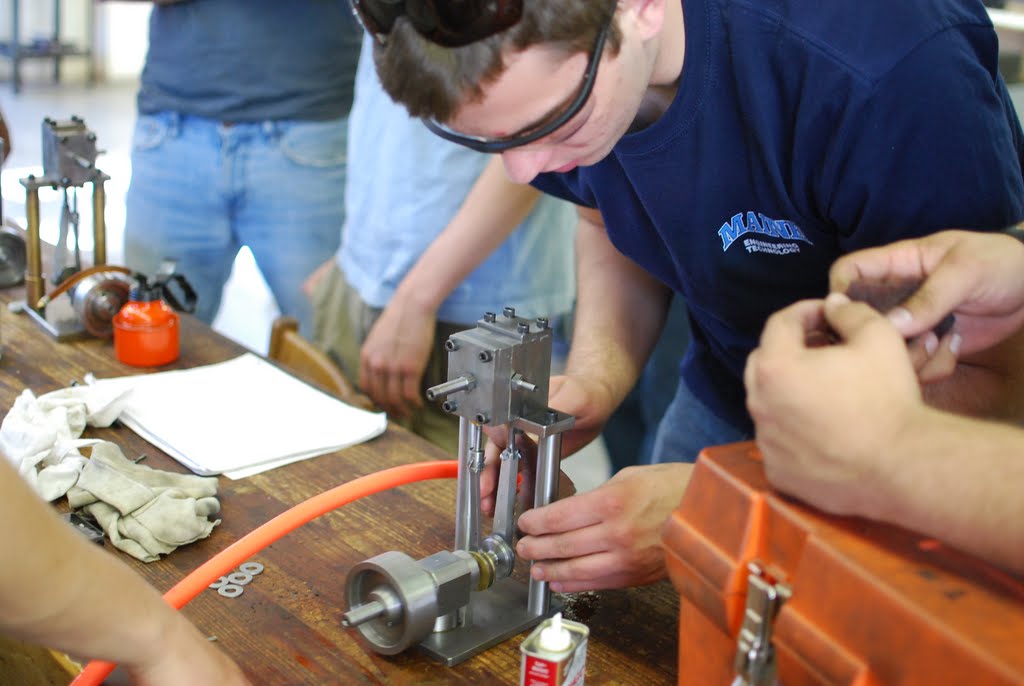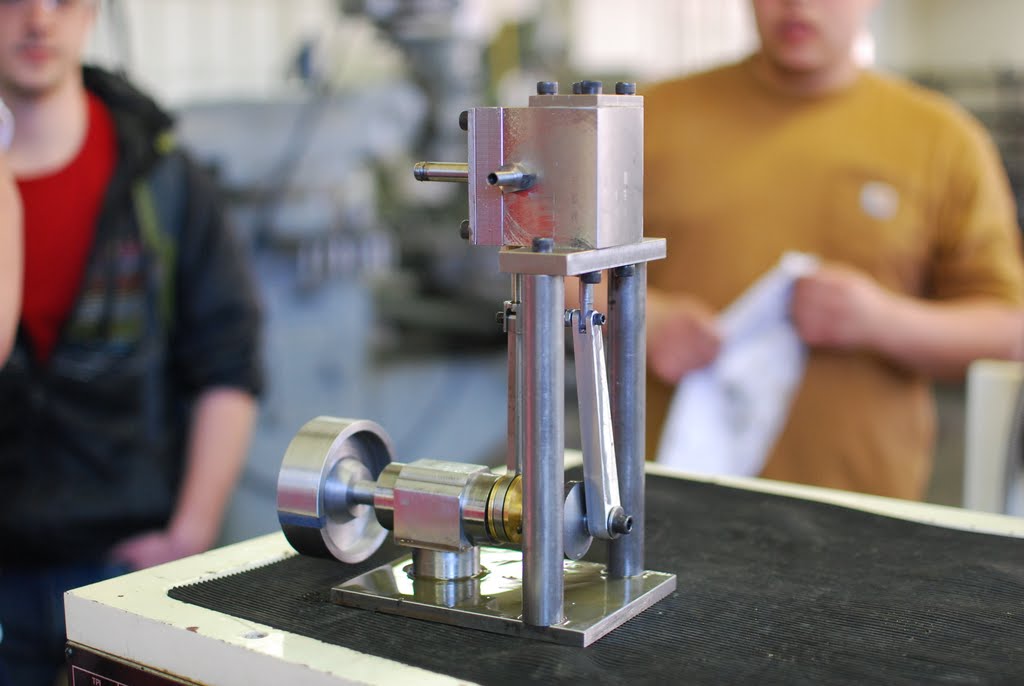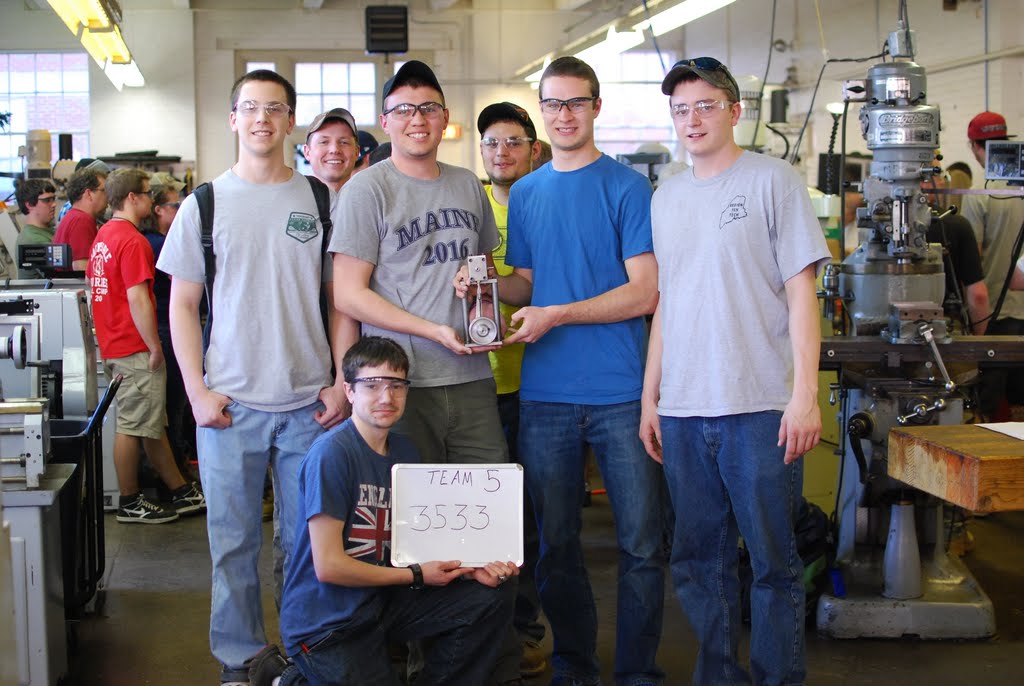Greetings all,
I am a student in the Mechanical Engineering Technology program at the University of Maine. As part of this program, we draw and build a steam engine. The plans are given to us during lecture. We use these plans to familiarize ourselves with CAD (Solid Edge) and it's attached drafting tools.
After our blueprints are signed off by our professor, we are trained on basic machining principles using the steam engine as our project. We are split into teams of five and we assign parts to each member.
At the end of the semester, we race our completed engines by supplying them with air flow via the shop's air system. We run them at no load and record the maximum RPM achieved using a tachometer on the flywheel.
Feel free to use these plans for your own projects. The drawings have been approved, but we are now beginning the build. I will try to keep the plans up to date if we find any errors. Please note that the file is property of University of Maine's Mechanical Engineering Technology department, any reproduction for sale is strictly prohibited.
THE PLANS CAN BE DOWNLOADED HERE OR HERE

[ame]http://www.youtube.com/watch?v=Pi-OcbBU6Dw[/ame]
[ame]http://www.youtube.com/watch?v=OUYSbetbuh0[/ame]



View attachment UMO-BSMET-Steam-Engine-2013.pdf
I am a student in the Mechanical Engineering Technology program at the University of Maine. As part of this program, we draw and build a steam engine. The plans are given to us during lecture. We use these plans to familiarize ourselves with CAD (Solid Edge) and it's attached drafting tools.
After our blueprints are signed off by our professor, we are trained on basic machining principles using the steam engine as our project. We are split into teams of five and we assign parts to each member.
At the end of the semester, we race our completed engines by supplying them with air flow via the shop's air system. We run them at no load and record the maximum RPM achieved using a tachometer on the flywheel.
Feel free to use these plans for your own projects. The drawings have been approved, but we are now beginning the build. I will try to keep the plans up to date if we find any errors. Please note that the file is property of University of Maine's Mechanical Engineering Technology department, any reproduction for sale is strictly prohibited.
THE PLANS CAN BE DOWNLOADED HERE OR HERE

[ame]http://www.youtube.com/watch?v=Pi-OcbBU6Dw[/ame]
[ame]http://www.youtube.com/watch?v=OUYSbetbuh0[/ame]



View attachment UMO-BSMET-Steam-Engine-2013.pdf


















































![DreamPlan Home Design and Landscaping Software Free for Windows [PC Download]](https://m.media-amazon.com/images/I/51kvZH2dVLL._SL500_.jpg)













